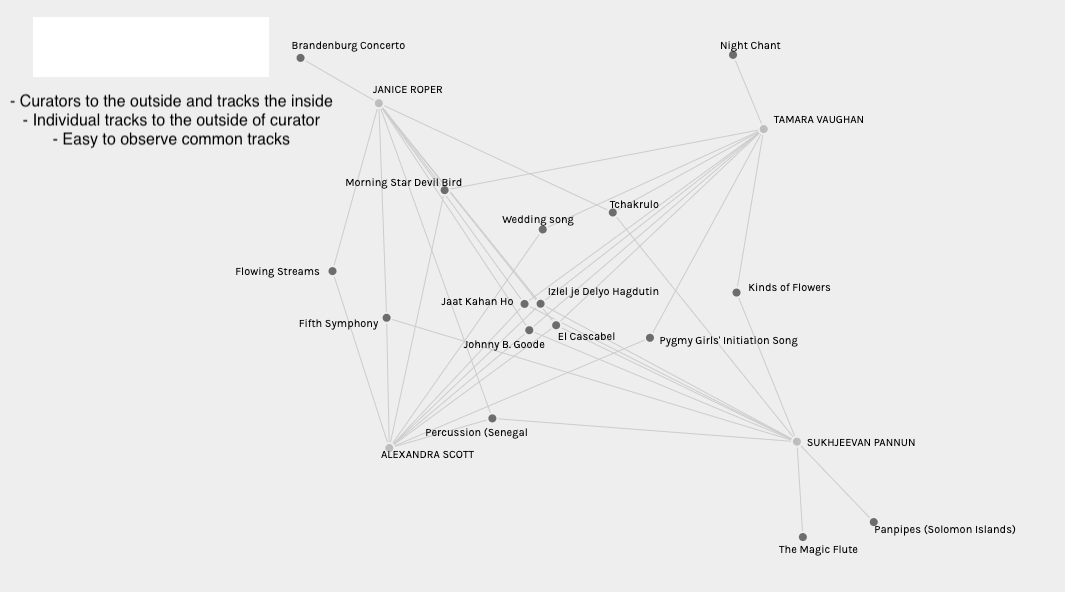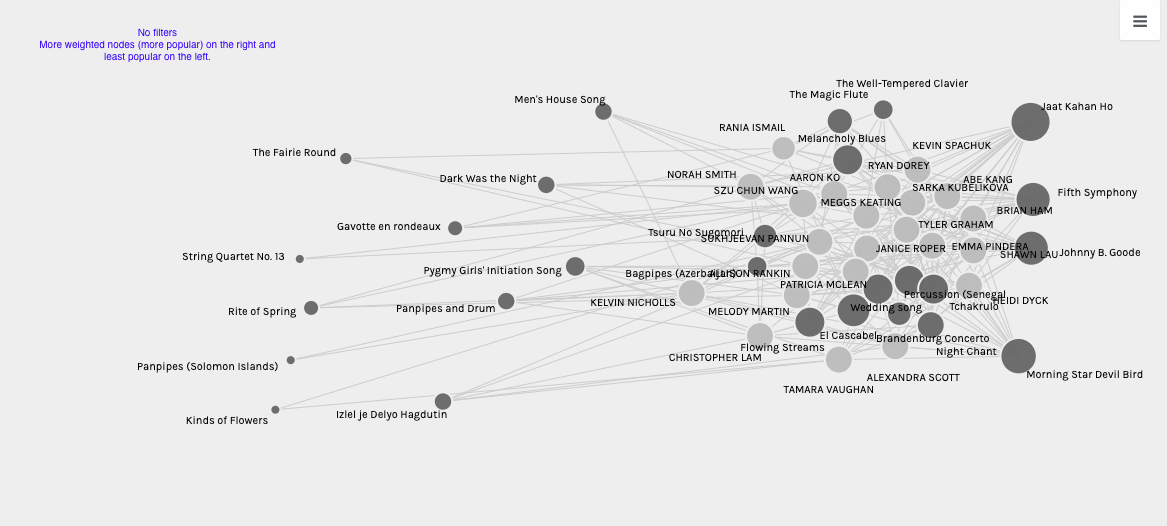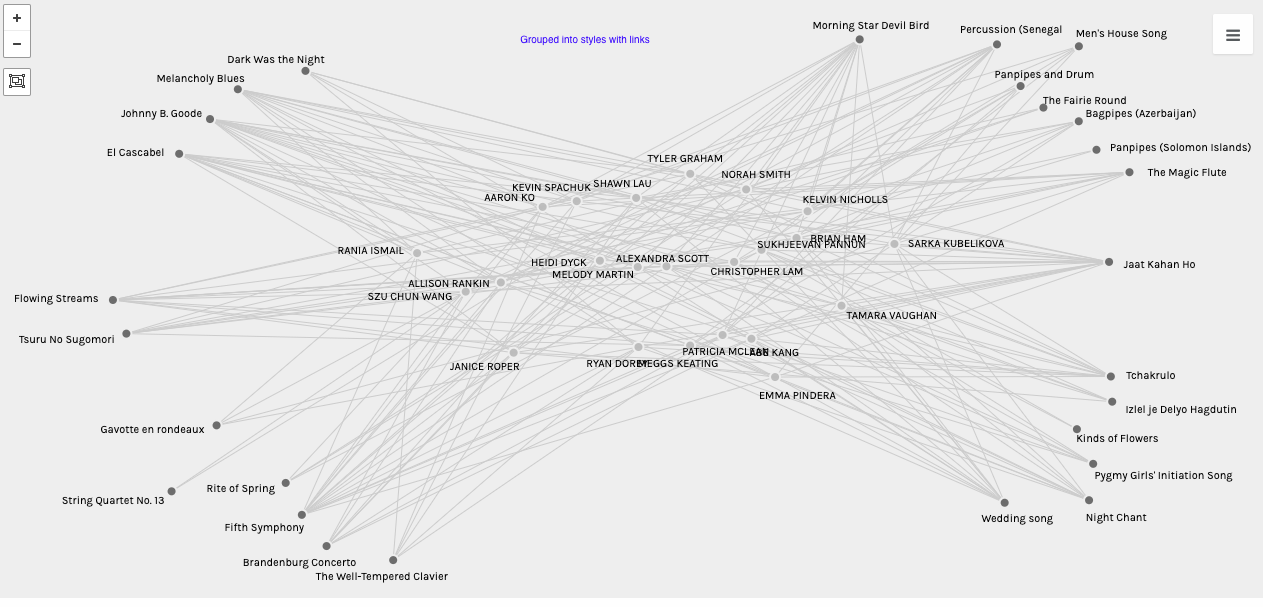Initially, looking at all of the data from the class in Palladio, it seemed like it would be difficult to see any relationships. I am more used to working with spreadsheets and pivot tables and working with information in that way. Once I started trying to create order within the network by moving around the nodes, I found this a very useful way to visualize the data and find connections in a different way.
After playing with several different methods of arranging the networks, I found that different arrangements enabled the visualisation of relationships depending upon the grouping selected. Within the small groupings I found it best to move the curators to the outside and the tracks to the inside, trying to keep the curators with more links in common closer together, this only works with smaller groups of about four curators.

With a higher number of curators, I found it more useful to move the tracks to the outside and keep the curators more in the middle. I was curious to see what tracks were popular and which ones were less popular. With the tracks to the outside it was easier to spot the volume of connections to each track, and with the option selected to view the weighted track nodes, it became even more obvious.

Higher degree (more connections) tracks to the right, and lower degree to the left
From this visualization, we can see that Jaat Kahan Ho and Morning Star Devil Bird appear to be two of the more popular tracks. String Quartet, Panpipes and Kinds of Flowers were the least selected tracks. Why were some tracks selected more often and some selected less? Although we don’t have each curator’s decision-making information available, it is possible to move around the nodes to help make some guesses.

Tracks to the outside grouped into different styles and regions
By trying to vaguely group the tracks into different styles and world regions, it could be observed that Jaat Kahan Ho, from India, stands somewhat alone as a musical representative from a very large country. Likewise, Morning Star Devil Bird, a didgeridoo piece from Australia, is also somewhat alone in its style and regional representation. Perhaps this was one of the reasons for these tracks having higher degrees than other tracks.
There were many western classical (Bach, Beethoven, Mozart) tracks in the list, and they were all represented in the curators’ selections, however, with a narrowing to ten selections, they did not all need to be there. Beethoven’s 5th Symphony was selected more than the others and String Quartet was least often selected. It could be because the 5th Symphony is very recognizable and has a full symphonic sound, and there were other tracks of string music represented in the popular selections so that the string quartet didn’t offer anything unique to the selections.
It’s very possible that there were other reasons for the popularity of items, as I applied my own ideas to the grouping and analysis of the data. The exercise demonstrated how regrouping and working with adjacency information can provide insight into relationships in different ways than spreadsheets and pivot tables. Being able to visualize and move the nodes is a more tangible way to work with the data and helps to explore relationships and trends in a new way.